Two days in Xi’an
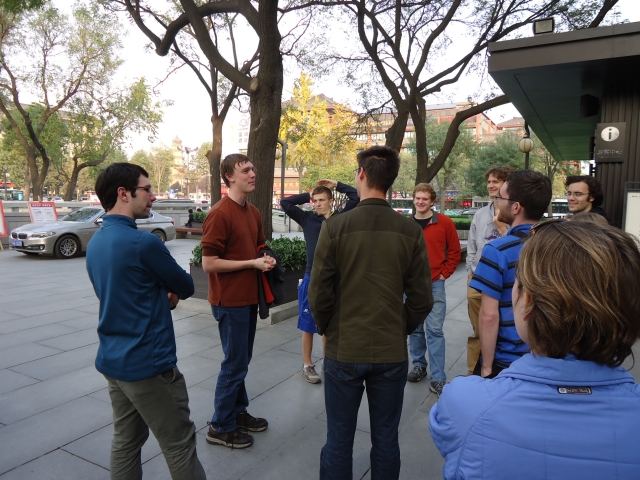

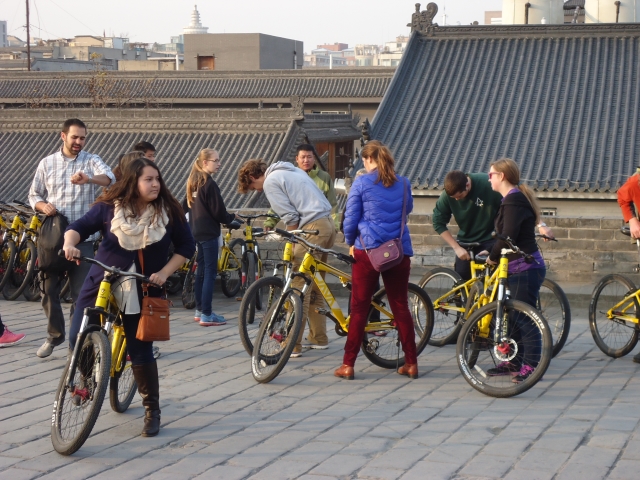
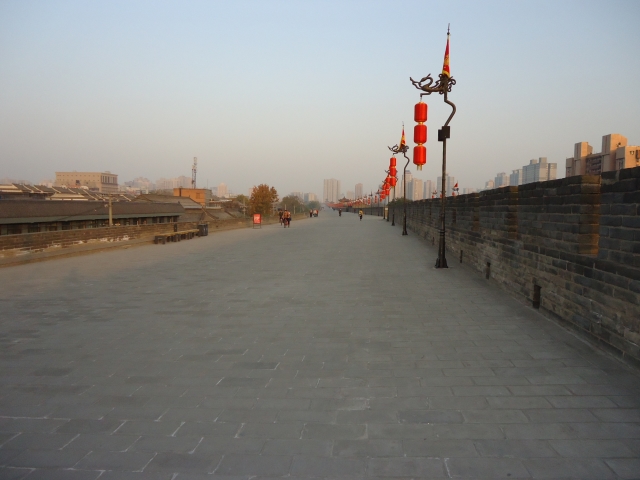
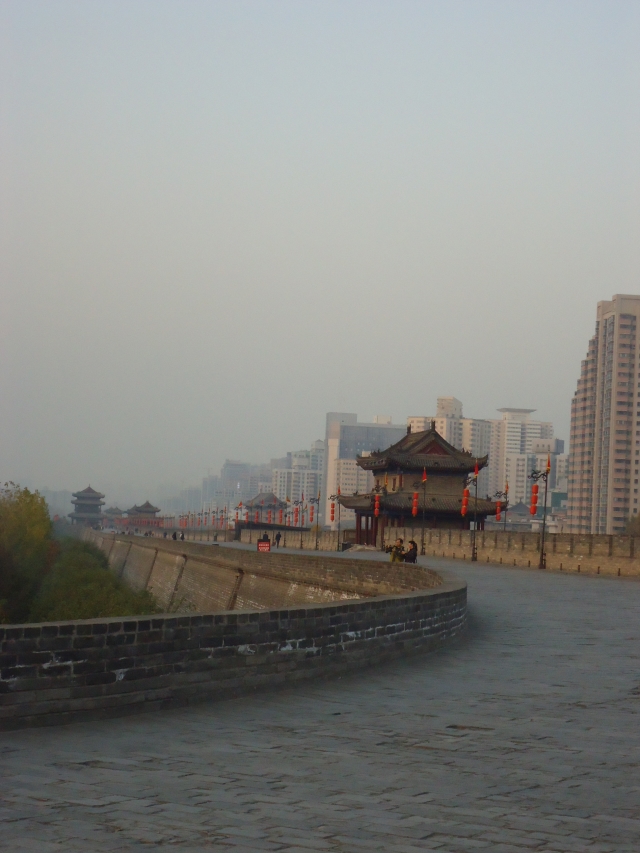
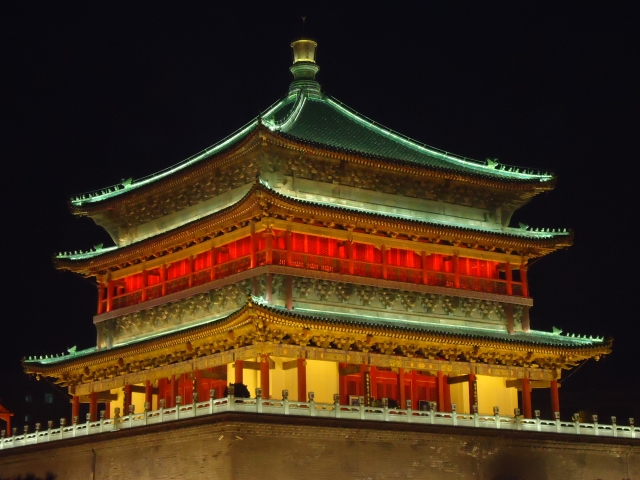
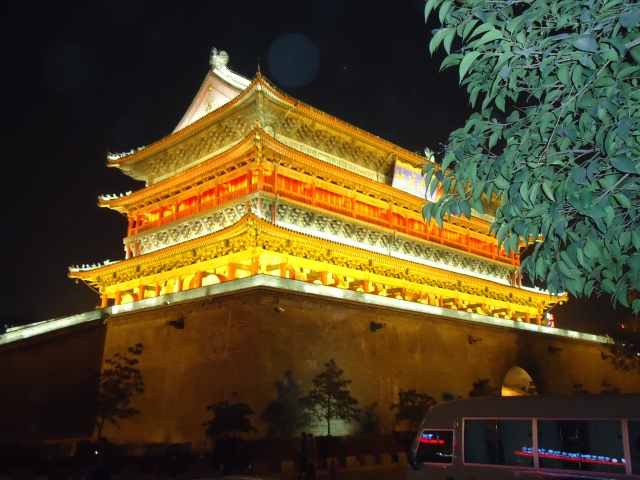
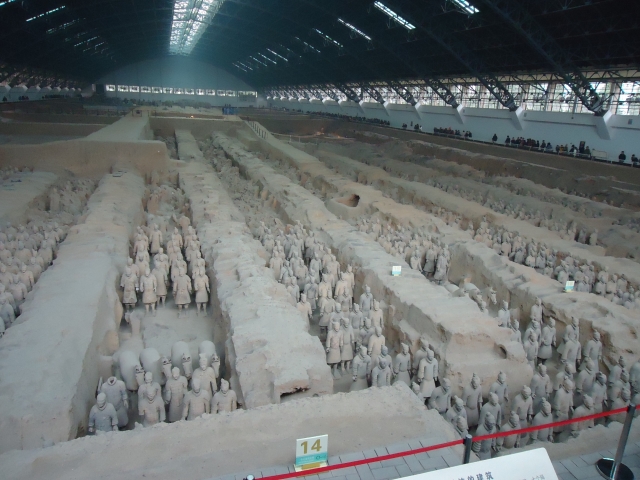
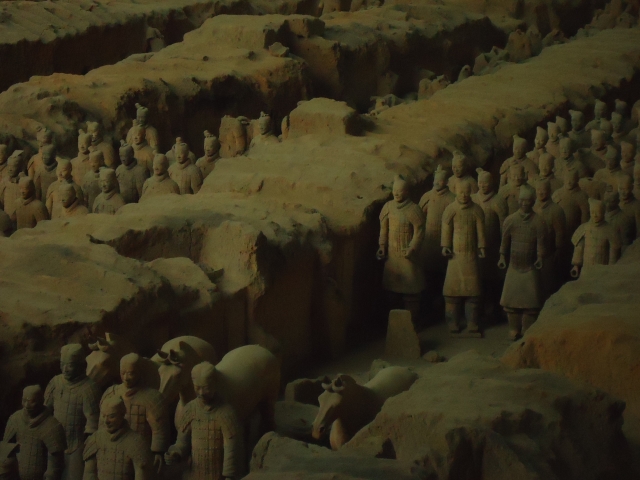
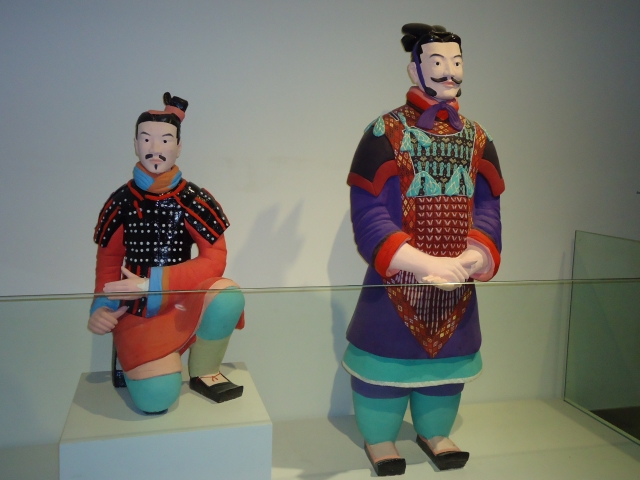
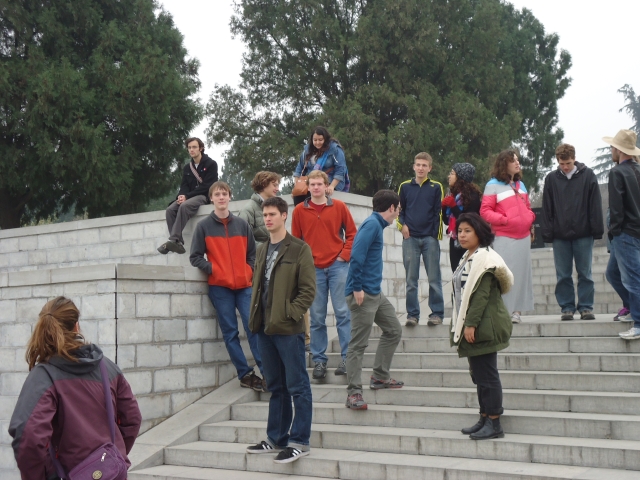
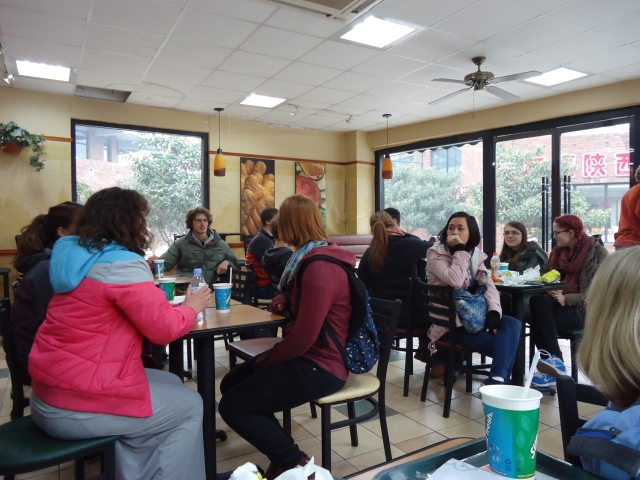
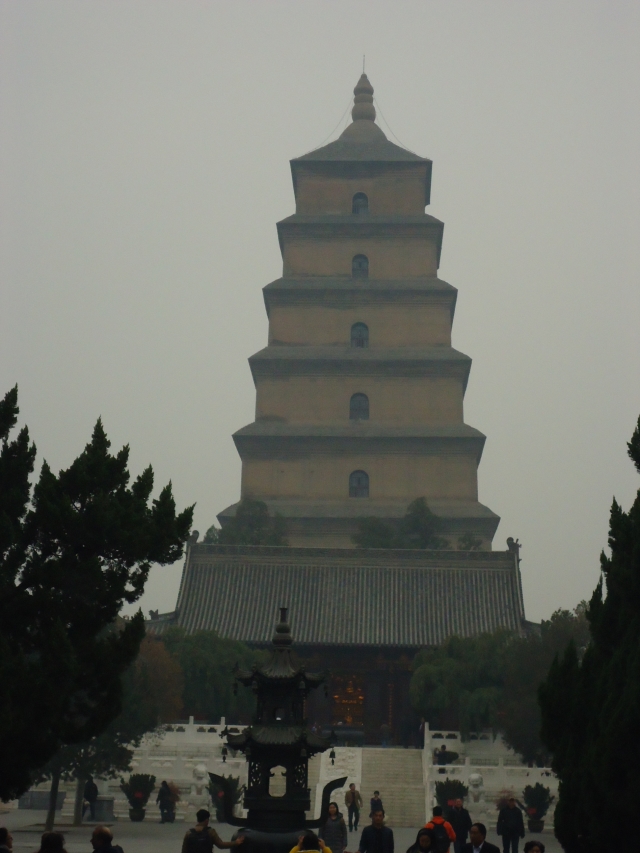
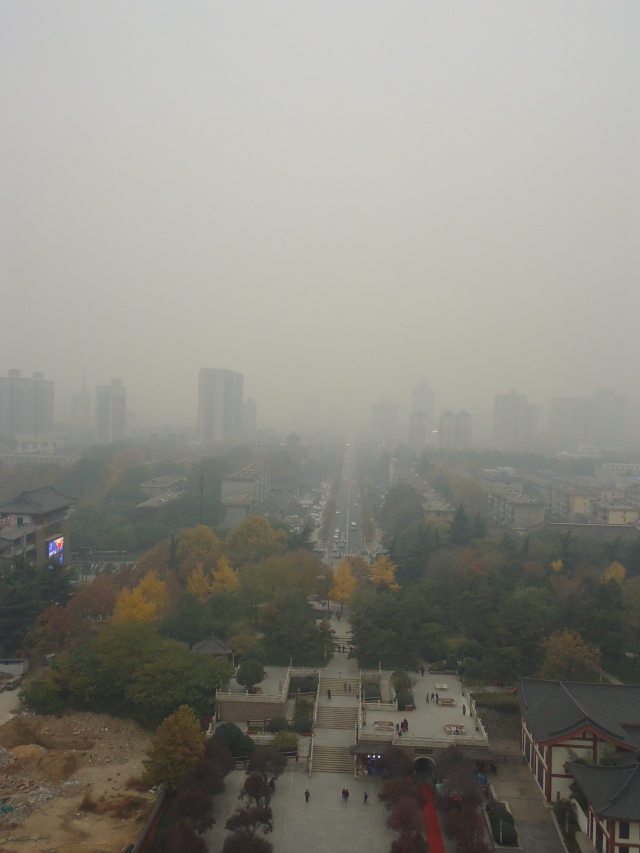
We spent November 20 and 21 in Xi’an, today the capital of Shaanxi Province, but once the imperial center of all of China. The city, and its predecessors, served as the capital for the Qin, Han, and Tang dynasties. It was also the eastern source of the Silk Road that connected China and the Mediterranean world in trade for centuries.
On Thursday we rode bicycles around the top of Xi’an’s old city walls – an 8.5 mile rectangle that enclosed the original footprint of the city. The current walls were built in the 1300s, but were erected on foundations much older. At one time all Chinese cities had massive walls like Xi’an’s, but on the 20th century most cities tore them down to improve traffic flow and facilitate modern construction. Xi’an’s walls are the best remaining example.
One of China’s most significant cultural landmarks lies just outside Xi’an: the terracotta warriors guarding the tomb of the first emperor, Qun Shi Huang. In 221 BC the king of Qin forced six other regional kingdoms to be his vassals, thereby uniting seven “warring states” into a single political entity, which is regarded as the first Chinese empire. Emperor Qin Shi Huang established his capital just north of modern Xi’an and expended tremendous effort in his relatively short reign to secure a comfortable afterlife through the construction of a huge underground tomb complex topped with a three-tiered pyramid. Details of the tomb’s contents and remarkable construction were known through written sources, but what was not known until just 40 years ago was that the tomb was guarded by a subterranean force of more than 7,000 terracotta soldiers, archers, and charioteers. In 1974 farmers digging a well discovered the remains of this military guard, and its excavation has been in process since that time. Each figure has unique facial features (including ears unique to each piece) that suggest the figures were based on specific individuals in the imperial retinue. Today’s museum complex includes three enclosed archeological pits and an interpretive center. Archeological work on the nearby tomb itself is only beginning now. The interpretive center includes a few pieces that have been uncovered there.
Given the fact that Xi’an was the center of the cosmopolitan Tang Dynasty, the city was (and remains) home to various people and traditions. On Thursday evening many of us visited the city’s Muslim Quarter, home to Hui (Muslim) families for centuries and the location of China’s Great Mosque. Xi’an has also long been the center of Chinese Buddhism. In the 600s a Chinese Buddhist monk, Xuanzang made a pilgrimage to India, Buddhism’s place of origin, and brought copies of Buddhist scriptures back to Xi’an where he copied and translated them. His work and texts were centered at the Great Wild Goose Pagoda, originally built around 652 but rebuilt and enlarged many times thereafter. Climbing to the top of its seventh story provides a good view of Xi’an, although smoggy air on the day of our visit limited how far we could see.
Friday evening at 7:55 p.m. we boarded a night train to Beijing where we would spend the final four days of our China journey.




